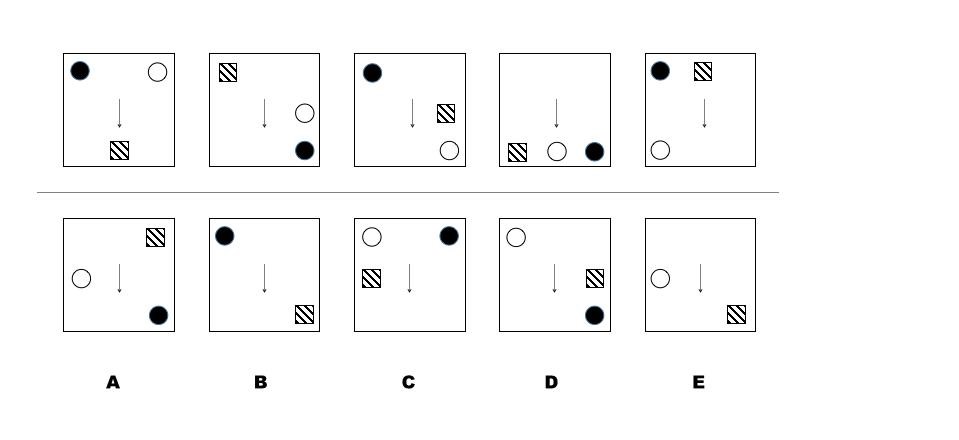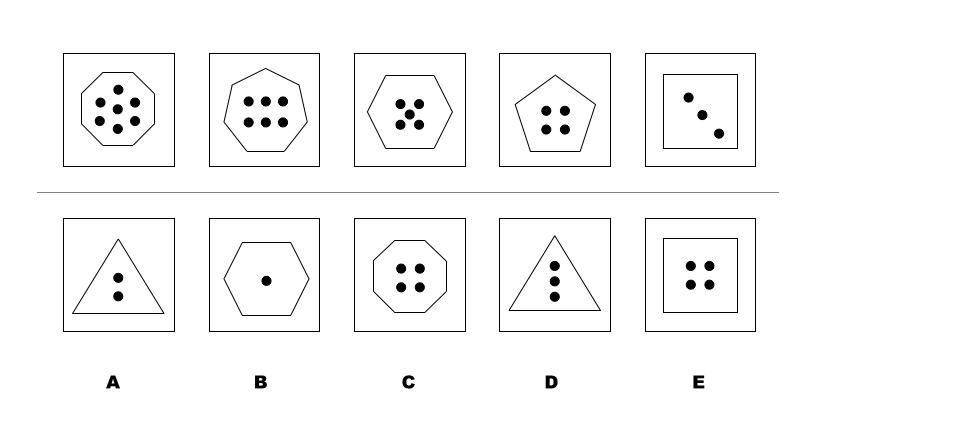Analytical Reasoning Tests
Updated 13 March 2021
Analytical Reasoning Practice Test
In this article Skip to section
- What Is an Analytical Reasoning Test?
- What Are Analytical Reasoning Tests Used For?
- Analytical Reasoning Test Practice Questions
- Question 1: Which Box Is Next in the Sequence?
- Question 2: Which Box Is Next in the Sequence?
- Question 3: What Most Weakens the Argument?
- Preparing for an Analytical Reasoning Test
What Is an Analytical Reasoning Test?
Analytical reasoning tests assess a candidate’s ability to study information and apply logic to find patterns or make inferences.
At work, people use analysis to scrutinise speech, documents, diagrams, charts and graphs, and gather the most relevant information. Those with strong analytical skills will consider how key elements within that information relate to one another, and are more likely to notice crucial patterns and details.
Analytical reasoning tests measure a candidate’s critical thinking and problem-solving skills.
- Data may be presented in the form of written passages, graphs, tables or shapes.
- Where questions are based on a series of images, they have much in common with inductive reasoning and non-verbal reasoning tests.
- Written analytical reasoning questions assess many of the same skills as verbal reasoning tests.
What Are Analytical Reasoning Tests Used For?
Recruiters use analytical reasoning tests to evaluate inductive and deductive skills in potential employees.
- Deductive reasoning is the process of reaching a logical conclusion based on one or more given statements, or premises.
- Inductive reasoning involves taking specific information and making predictions based on that.
Candidates do not need any specialist knowledge for analytical reasoning tests, but they must be able to think logically and pay close attention to detail. Those who demonstrate strong analytical reasoning skills are generally highly intelligent, quick to learn and more likely to improve over time in a role.
Non-verbal reasoning tests can also be helpful in assessing international candidates, or applicants who do not have English as their first language.
Candidates applying for mid- to higher-level positions may be asked to take an analytical reasoning test as part of the selection process. Analytical skills are particularly important for jobs that involve maths and numerical reasoning.
They also extend into roles where decision-making and problem-solving are key. So companies may use these tests when recruiting for positions such as computer software engineers, financial analysts, human resources managers and office managers.
Many law firms also assess analytical reasoning skills as part of their recruitment process. And analytical reasoning tests may form part of a leadership assessment process, such as a graduate recruitment scheme.
Analytical Reasoning Test Practice Questions
Analytical reasoning tests use both verbal and non-verbal questions.
In inductive reasoning tests, questions usually involve a series of diagrams or pictures. The candidate must find the pattern, rule or link between each item. They can then use this knowledge to decide what comes next in the sequence.
Deductive reasoning tests are typically verbal. The candidate must read a statement, or series of statements, and then choose the logically correct answer.
Examples of both are given below, with answers and explanations.
Question 1: Which Box Is Next in the Sequence?
This is an example of a question where things move around. There are many variations on this theme.
At its most basic level, elements will move around inside a box and the candidate must understand why they are moving in a particular order. By understanding this they will be able to correctly select the image that comes next.
In the example above there are three rules to take into account. Begin by studying each of the shapes separately and notice how they change position from image to image.
The black circle is moving backwards and forwards between the top-left corner and the bottom-left corner. The white circle is moving anti-clockwise around the box, progressing by half a side each time. The stripy square is moving clockwise around the box and moves forward by one and a half sides each time. The arrow is irrelevant as it stays in the same place throughout. Putting all these rules together, the correct answer must be E.
This example also illustrates a trick to watch out for – the black circle has become invisible because it has moved behind the stripy square.
Question 2: Which Box Is Next in the Sequence?
Candidates may also be asked to find the relationship between a set of items. There are a number of ways that elements can have relationships with one another, for example:
- Where they are in relation to each other
- The number of sides that different shapes have in relation to each other
- Numbers that incrementally increase or decrease
To solve these types of questions you need to identify the rule that governs the relationship and then apply it, as in the following example:
There are two patterns to find in this question. The first is that the number of sides on the large shape decreases by one each time. The second is that the number of dots in the middle is equal to the shape’s number of sides, minus one. The correct answer is therefore A.
In this sort of question, remember also to look for relationships between odd and even numbers.
Question 3: What Most Weakens the Argument?
The following question is an example of deductive reasoning. Here the candidate must read the passage and then come to a logically correct conclusion.
This question involves identifying an assumption. An assumption is a belief that is not explicitly stated within the text but must exist to link the argument’s evidence and conclusion. To successfully answer these types of question you must find that missing link between the evidence and conclusion and then fill it.
"If all beaches were publicly owned, we would have to rely on government funds to maintain them. It is true that more people would have access to the ocean and beaches, but at what cost? If the beaches are not cared for adequately, soon there will be nothing left worth having access to. We should consider carefully before nationalising more coastal property."
Which of the following, if true, would most weaken the argument above?
A – The public does not want additional access to beaches.
B – The government is currently responsible for the maintenance of all public and private beaches.
C – The public already has some access to many beaches.
D – Other property has been nationalised in the past, with no complaints from the original owners of the property.
E – Some privately owned beaches are not well maintained.
The correct answer is B. This is how and why we must reach that conclusion:
The evidence is that, while nationalising will allow more people more access to beaches, it could also mean that we'd have to rely on government funds and labour to maintain them. The author argues that more access to beaches is only worth having if the beaches are well cared for and therefore attractive to visit.
The author's conclusion is the final sentence: ‘We should consider carefully before nationalising more coastal property.’
So, the author believes we have reason to be concerned that nationalising more beaches would result in them being less well-maintained than if they remained in private hands. This claim is not supported anywhere in the text, it is the author’s assumption.
To weaken the argument, the correct answer choice must negate the assumption at its heart and imply that the government would do a good job maintaining the beaches. Choice B does this by saying that private beaches are already cared for by the government.
So, if the government were to nationalise those beaches, the government would take on no new maintenance obligations and there should be no additional cause for concern that the beaches would be badly maintained.
Preparing for an Analytical Reasoning Test
Analytical reasoning tests can be daunting, even for confident problem solvers. You may not have come across these types of questions before, so it is essential to take plenty of time to prepare properly. This will prevent you from panicking and ensure that you gain the highest score possible.
The following tips and techniques will help you to begin the test ready to perform your best:
- Know what to expect. Employers and test publishers may use terms such as inductive reasoning, deductive reasoning, verbal reasoning or non-verbal reasoning when referring to their tests. It is worth contacting the employer or company assessing you to ask more about the test you will be sitting. Most will be helpful in clarifying the nature of the test. They might provide a few example questions too.
- Practise. And then practise some more. The more tests you do, the more familiar you will become with the types of questions that may come up, and the more confident you will feel. You will also begin to develop your own strategies for solving questions. Identify which types of question you find the hardest and then focus on finding the best ways to tackle them. JobTestPrep is a useful resource for sample tests and answers.
- Manage your time. It is likely that you will be under pressure to complete all the questions within an allocated time. Work out how long you have to answer each question and then stick to your schedule. Don’t waste time labouring over a question that is proving particularly difficult. Move on, and then come back to any questions you have skipped over at the end if have time to spare.

